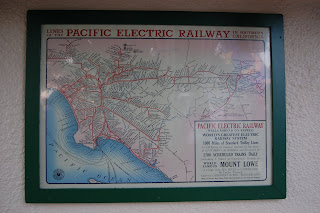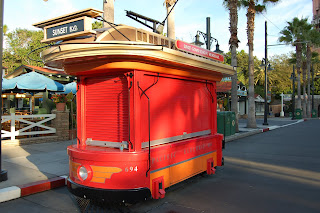Rosie's All-American Cafe on Sunset Boulevard at Disney's Hollywood Studios is more than just a great place to get a cheeseburger. It's also an homage to one of the great icons of World War II, Rosie the Riveter.
"Rosie the Riveter" was a popular song in the early '40s, and the term came to represent the movement toward American women stepping into male-dominated factory jobs to keep things going while their men were off fighting the war. Although fictional, Rosie the Riveter became most closely associated with a woman named Rose Will Monroe, whose job as a riveter in an aircraft factory was popularized in a wartime propaganda film.
Rosie's All-American Cafe is packed with details telling this story, from Rosie's lunchbox and welder's equipment to the bulletin boards covered in clippings about fly boys and working girls. Look closely, and you'll find a picture of President Roosevelt, some of the Defense Bonds (a precursor to War Bonds) that Rosie has purchased, and a great article entitled "Milady is Making Airplanes."
On this last board, we even find a couple pictures of Rosie's guy, along with a hand-written letter from him: "Rosie, I really had a great time Saturday night. I think you're really swell! It would be great to see you again before I ship out. That is... if it's alright with you. Fondly..." (Unfortunately, the young fella's name is covered up by his photo.)
The Set Decorators at Walt Disney Imagineering work hard to give the stories told in the parks a sense of authenticity. Whenever possible, especially when telling a story set in a real time or place, they try to find props from the actual period or locale. At Big Thunder Mountain Railroad, for example, Imagineers canvased the country to acquire genuine mining equipment from the 1800s. This attention to detail can be found everywhere, including here at Rosie's.
Most of the props and items found in the location are antiques from the 1940s. Their reality helps to ground the fictional story. Some of the best of these props are actually on display just outside, as part of the condiment stand. The next time you're grabbing forks and napkins, take a moment to admire the WWII-era toys, postcards, pins and ration books.
Another fun discovery inside Rosie's All-American Cafe is this bit of Hidden Disney. Scattered among the props are several wartime insignia featuring Disney characters. During World War II, the Disney Studio was pressed into service making training and propaganda films for the military. Disney artists also designed more than 100 insignia for various divisions of the armed forces. For more about Disney's involvement in the war, check out the DVD collection from Walt Disney Treasures, "Walt Disney on the Front Lines," and the (out of print but still available) book Disney Dons Dog Tags.





















































